We’ve all heard different opinions about mirrorless camera pros and cons. Some photographers have made the change while others don’t think it wise. I asked a bunch of Alien Skin’s photographer friends to share their thoughts about adopting a mirrorless rig as their main camera. Their responses have really helped solidify my now undying desire to own one. Thanks for spending my money, guys!
You may notice how much controversy there is over these little beasts. It reminds me of the quarrels over film and digital capture in the beginning. Is the market headed that way? What are your thoughts about mirrorless camera pros and cons?
Parker J Pfister
Mirrorless systems can be astronomical, but they don’t fit into everyone’s workflow. How you feel about mirrorless camera pros and cons really depends on what and how you’re shooting. I was a believer of the new system, so I adopted them early. I did have to force myself to get used to them, though.
For shooting portraits or fine art, they’re an absolute must. You can use them for weddings, too–at least for most of the day. The DSLR’s autofocus speed is unparalleled, whereas with a mirrorless rig there is a delay. They’re not that bad, though. A wedding can certainly be done. You just have to change your way of thinking. The moments that you may miss, are they worth lugging around all that gear to get?
Yes, you’re going to have to adapt to the new system, but they can produce just as good—if not better—shots. The EVF displays exactly what you’re going to capture, which means you can inspect your images on the fly. This opens up a whole new realm of visualization. You can literally see (and shoot) in the dark.
Another one of my favorite things about mirrorless cameras are that they can adapt to any lenses you want to use. I routinely shoot with vintage glass. Some of my favs are 8mm lenses from WWII. Fine art photography can use interesting, or even broken lenses like these in stride.
These are wonderful systems, but there is still room in my bag for the DSLR’s. A lot of the time, I’m just using the mirrorless because they aren’t as cumbersome or intimidating. The photos you get are definitely a little different, but I like different.
Jeff Ascough
I used the original mirrorless system for many years–the Leica M rangefinder–so I do see the appeal of the current crop of mirrorless cameras. Size and weight is always an issue for photographers and it has to be said that these cameras have a distinct advantage in that respect. For me this is really the only advantage of mirrorless and it isn’t a compelling enough reason to switch from DSLR for the foreseeable future.
The main issues are sensor size, media, weatherproofing, and viewfinder technology.
A small sensor just doesn’t give me the same spatial separation of elements within a photograph. I like a large sensor and would probably be more interested in a medium format system than mirrorless. I like to use dual cards in every professional situation and mirrorless can’t provide this as yet. Weatherproofing and robustness of the camera is another issue which I feel will be addressed but a pro DSLR will still outperform mirrorless at this moment in time.
Viewfinder technology is interesting but EVF isn’t for me when working quickly. In a small camera, a rangefinder system is far superior in my opinion. Adding an optical system inevitably increases the size and weight of the camera so it could be argued that you may as well use a DSLR anyway.
I don’t doubt that mirrorless technology will play a huge part in professional photography over the coming years but at the moment it isn’t something I am interested in.
Kevin Mullins
I’d been shooting with Canon systems for four years (5D 1/2/3 and 1DX) and whilst those cameras were and still are exceptional, I found that I craved something smaller and lighter. My style of photography is reportage which means I like to get in very close to my subjects, and with large DSLRs I was finding it more difficult to be unobtrusive. A few years back, I tried out the X100. It was great, but wasn’t ready to replace my DLSRs. Fast forward a little to when Fuji announced the X-Pro1 with a range of very light, relatively cheap, exceptionally sharp lenses. I was sold. At first I shot with both the DSLR and the X-Pro1 but over time, especially as the lens choices increased, my DSLR was relegated so I sold them. I’m now at the point where I shoot weddings entirely with two Fuji X-T1s with lens lengths at 23mm and 56mm. The benefits are amazing; much lighter, much cheaper, and much more discrete. The choice of lenses that Fuji have created in such a short time is next to miraculous in my book. I also take an X100S with me to weddings which is the perfect camera for close up candid work as it’s deadly silent. I try to behave and look like a guest at a wedding and these cameras allow me to do that very easily.
Additionally, being able to use electronic viewfinders means I can be sure of my exposure with less chimping required. This means I can concentrate more on shooting, and capturing the moment.
John Barclay
I shoot 95% with a Fuji X-T1 and X-E2. I really thought they would be augmenting my Nikon system, however, the more I use them the more I love them. The main reasons are the size and weight, but, of course, image quality must be there. So how does the Fuji compare? It’s just fantastic, stunning in fact. And, Fuji has the most glass which just happens to be of exceptional quality. The Electronic View Finder (EVF) takes a little getting used to, but the X-T1 has a class leading EVF and it is as close to looking through glass as I’ve seen. One last point, the cost. Typically Mirrorless systems are significantly cheaper than a comparable DSLR system. On the negative side, the battery life is terrible, but batteries are cheap and small, so its not a deal-breaker for me. Now is a good time to jump in, the water is warm!
Hernan Rodriguez
The image quality of mirrorless cameras is impressive. The shots I’ve taken with them were just in ambient light at high ISO, but the images were sharp, had low noise, and great color balance. From these results alone, I’d be willing to take one along on my big shoots as a backup or for behind the scenes shots.
My biggest concern of changing over is lens options. Photographers build a library of expensive glass which produce a look they’re accustomed to. My colleagues interested in switching systems are not willing to invest in another set of high-dollar lenses. I’ve also heard about issues when using flash, which is concerning. Flash issues may only come up during isolated circumstances, so it’s hard to judge without further testing.
The technology of these cameras is amazing! A new $1,600 camera outperforms a 3 year old $4,000 camera. The potential is there, but it’s not ready for prime-time just yet. It’s similar to buying a new model vehicle: hold off and let the kinks get worked out in the first few models.
Dustin Abbott
I own a mirrorless camera, the Canon EOS M. I bought it as a lightweight, inconspicuous option for the times when I don’t want to lug around a DSLR or don’t want “elbow” into another professionals turf when I’m not the photographer of an event I’m attending. I really enjoy this little option, and delight in the fact that such a small camera can produce such excellent results.
But it won’t be replacing my DSLR.
The primary reasons: full frame image quality and the broader functionality of my DSLR systems. Many mirrorless options feature (at best) a sensor with a crop factor from 1.5x to 2x. For some styles of photography this doesn’t present a problem, but options are far more limited for shooting narrow depth of field shots or providing delineation of the subject from the background. The full frame DSLR look is still superior. While a few mirrorless cameras now feature a full frame sensor, none of them yet rival the full range of functionality that a DSLR offers in the larger body.
The industry is changing, perhaps, but DSLRs are not going away any time soon.
Tony Sweet
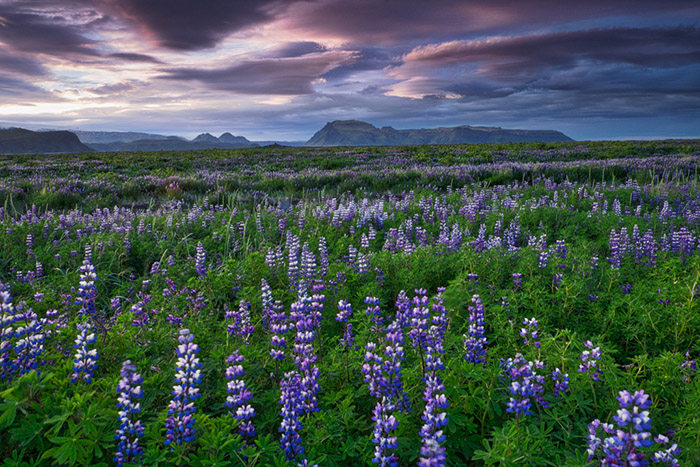 I’m a big mirrorless fan. They deliver the same quality images as a decent DLSR in a smaller, lighter package. Side by side tests show little difference between the Fuji X sensor w/18-55mm and the D800 w/24-70mm. Of course, don’t believe me–go out and test one for yourself.
I’m a big mirrorless fan. They deliver the same quality images as a decent DLSR in a smaller, lighter package. Side by side tests show little difference between the Fuji X sensor w/18-55mm and the D800 w/24-70mm. Of course, don’t believe me–go out and test one for yourself.
They’re perfect for the portrait and landscape shooter and their compact size draws much less attention than a clunky pro rig, making them a joy to use for street photography.
The smaller body doesn’t come without a few hiccups. For example, they could be an issue for people with big hands as the controls are pretty tightly packed on the body. Also, these rigs may not be the best fit for the wildlife photographer, yet, but big glass is coming. And lastly, they are not as weatherproof as DSLRs, unfortunately. Speaking of, I soaked one of mine in Cuba and had no problems, but I was a little nervous.
There are a few features still missing for me. Just personal taste. I’d like a wider bracket range (currently +3 to -3), and the ability to perform more than just 2 multiple exposures.
If you pick one up, make sure to buy several extra batteries. They work decently, but not great. I tote a half-dozen extra batteries around with me, so it’s not a big deal. Batteries are small, pack easy, and aren’t expensive.
Everything on my blogs from Sept. 2013, with the exception of multiple exposures, are shot with the Fuji X system cameras. If you’re interested, check them out. Also, I’ll be covering their performance in extreme conditions on my blog after my return from Iceland.
Chris Corradino
My experiences have been with a Sony NEX7. The weight is perhaps the most attractive part. This little thing is a pleasure to hold, and would make traveling much easier!
Wildlife photographers, or even sports photographers who need super telephoto reach, have very few (if any) options. This essentially rules these cameras out for those who specialize in that kind of work. I assume this will be remedied moving forward, but it does give one the feeling that the overall product line was rushed to the market before having a full array of options for working professionals.
Some features work extremely well. For instance, I was surprised by the speed of the FPS and the programmable dials and buttons was a nice touch.
Perhaps the biggest let down, next to the lack of long lenses, is the EVF. After using a DSLR, looking at an electronic viewfinder is very fuzzy, making it hard to determine what’s in focus (even with 20/20 vision). I could imagine eyeglass wearers will really struggle with this, too.
They’re cheaper, but the price is still surprisingly high–almost equal to that of a DSLR, yet the overall functionality is not nearly as polished. Because of this, I’d hold off as the mirrorless models continue to develop.
Frank Doorhof
Mirrorless cameras are awesome. I’m always on the road, so I’ve been wishing for a camera that could rival my DLSR in image quality, but that wasn’t as much of a burden to carry.
Most of the smaller cameras didn’t get the job done. The first one that did was Fujifilm’s X-Pro1. It took good-quality, sharp photos and was very light. It wasn’t long before Sony introduced their A7–which is a dream camera for me. The little rig captures robust 36mp images without an antialiasing filter, so it takes incredibly sharp images. The best part: the dynamic range of Sony cameras. Now I actually give up some tonal range when I shoot with my DLSR.
At first, I hated the EVF. I preferred the standard OVF. Like all things, after a bit of time and practice, my angst became appreciation. Now I really like them! What you see is what you get, which is great when shooting difficult lighting scenarios such as backlighting, snow, and darker scenes. Also, thanks to the EVF’s peaking effect, shooting with manual focus lenses is a breeze.
Don’t get me wrong, I love shooting with a heavy DSLR or even medium format, but when I walk on the street, mirrorless is the way to go. They’re fast, light, and small so people don’t see you as a threat. Every little bit helps! :D
The future is bright for the mirrorless cameras. We’ve only seen the tip of the iceberg!
Rick Krueger
The first thing that captured my attention was the size and weight of mirrorless cameras. They’re less intrusive, and less intimidating to clients. This is especially crucial during boudoir shoots where a client is already somewhat out of their comfort zone as we start. Plus, they’re really easy to travel with.
I have a sense of nostalgia when I shoot with one. It gives me flashbacks to working with the camera I learned on way back when. The feeling brings me back to my roots, so I’m more focused on fundamentals of composition and exposure.
The other thing that I really love about the new mirrorless trend is the return of vintage and vintage-style glass (Leica, Canon FD, Voigtlander, cheap manual focus lenses, etc.) Focus peaking technology makes the EVF so easy to use, that old manual focus lenses shoot just as crisp and gorgeous as when shooting with a new one.
To me, the mirrorless push in the industry reflects a perfect balance of old becoming new again. My mirrorless camera brings me back to a place that breeds creativity and technical expertise. I can confidently say that my work has improved tenfold since the switch. DSLR’s have gotten so good technically, that it’s almost too easy to get great shots. I like a challenge!
Andrew Foord
We live in a world where smaller equals cooler, but the rule doesn’t always apply when you’re a working professional. People expect to see robust, cumbersome gear or they don’t feel they’re getting their money’s worth. Imagine the bridal party’s reaction when you pull out a cute little camera.
These dainty little rigs hold their own to a lot of the DSLRs on the market. Plus, the small form factor is perfect for this private moments at any event. They’re stealthy, light, and most importantly they take great-looking photos.
To me, the size is more important than weight. It’s not the heaviness as much as the overpowering statement that a bigger rig can emote. Lens choices are just as good, if not better with the mirrorless rigs. Almost any lens that you can find will work with one of these little guys. I’ve even heard rumors that Sigma plans to open up to new camera models, too. It’s very exciting.
The cost matters a lot to me. Mirrorless is a lot cheaper than a DSLR, not just the body, but the glass as well. You just don’t need 15 lbs of glass to make a crisp photo.
On the other hand, the EVF is a PAIN to use until you’re used to it. I hated shooting with mine at first. You quickly become accustomed to shooting with one though, so it’s not a big deal. Just don’t expect your first experience to be flawless. Battery life can go quick as well. Obviously, the battery size is kept small, so it comes with the territory. Replacements aren’t costly, and they’re pretty reliable.
Joe Payne
I purchased a Fujifilm X-E1 last summer primarily as a lighter “walkabout” alternative to my Canon EOS 1D-X and 5D Mark III DSLRs. I’d played about with it a little at Parker J’s workshop and liked its size and weight and the image quality was really good. As the father of 5 and 3-year-old girls, I wanted something that was compact and took better pictures than a P&S or an iPhone when we were out and about on family trips. I was basically tired of lugging my gear around.
Early on, I did take the Fuji out with me on weddings and shoots where wearing it around my neck with the 35 1.4 lens attached was pretty easy. However, despite liking the image quality and really wanting the Fuji to deliver for me, I found I just naturally reverted back to the DSLRs on the majority of occasions. The primary reason for this was the dodgy AF performance in fast-moving situations. With weddings, I found I was missing too many moments as the AF hunted around and, by the time it had locked on and the shutter had closed, the moment was gone. After the second or third occasion of this happening, I didn’t want to chance it again.
I did play with the X-T1 at the Fujifilm booth at WPPI in March and a lot of those issues did seem to have been addressed. However, after just dropping around $1,000 on the X-E1 a few months before, I wasn’t really in a rush to upgrade. My thinking is that the success of the mirrorless system means that R&D in these areas is going to go through the roof over the next few years. New models are going to keep coming out on a pretty regular basis and I’m not going to sink any more money into a new body that’s going to be obsolete in 12 months.
I’ll be really interested to see how things develop and look forward to seeing a full-frame model with dual card slots come out sometime soon. Hopefully, the glass has been designed with the future and that larger sensor size in mind. For now, the X-E1 performs well for personal stuff and that was all I was really looking for anyway.
Try Exposure Today


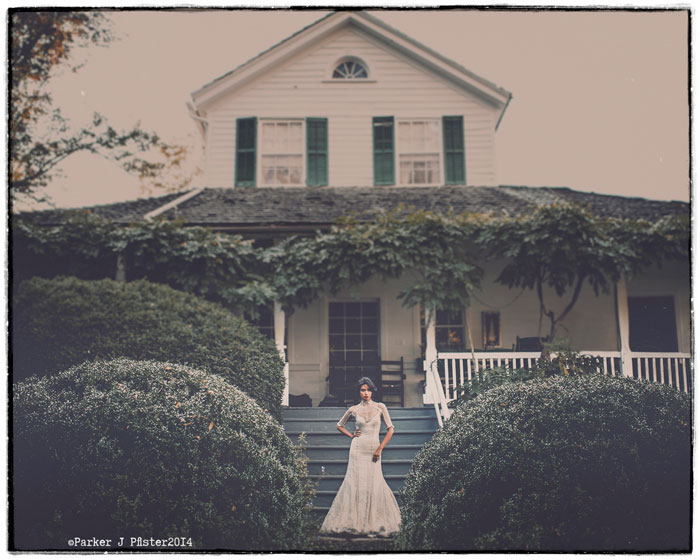
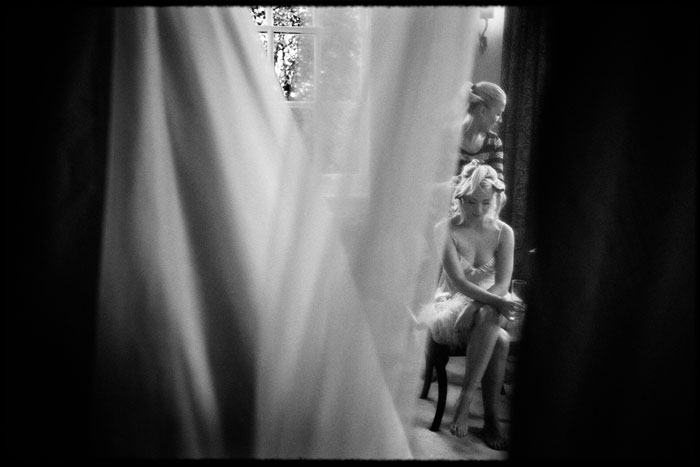

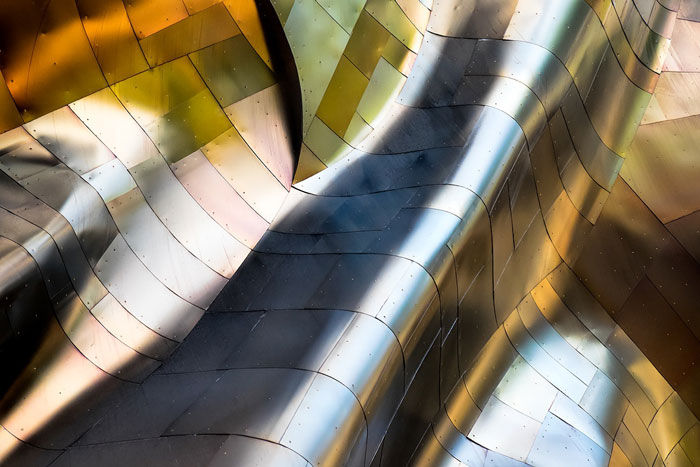

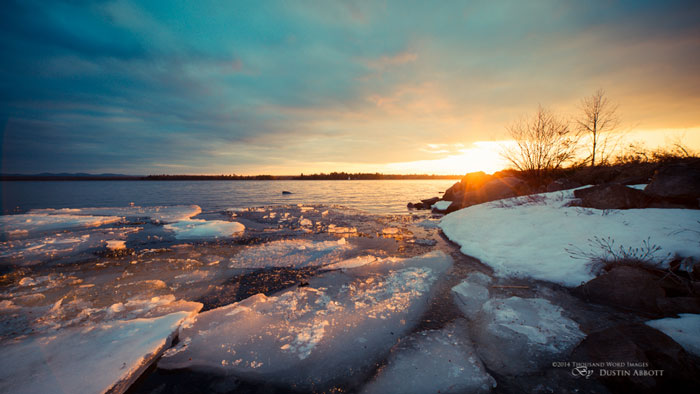
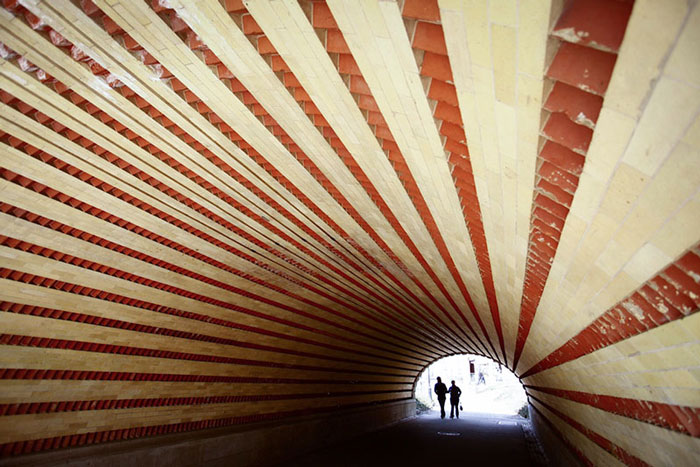
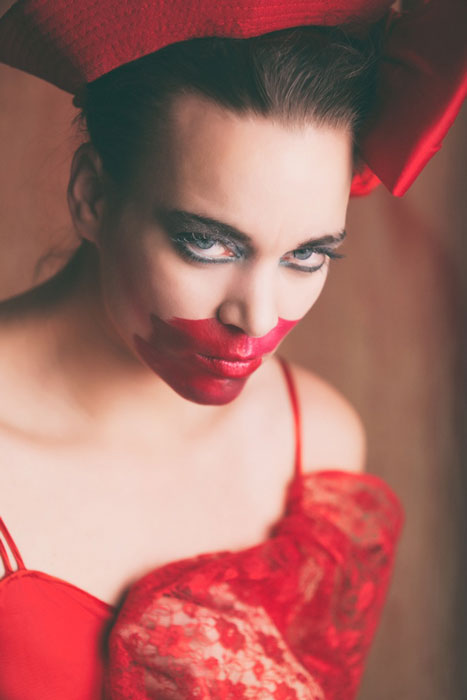
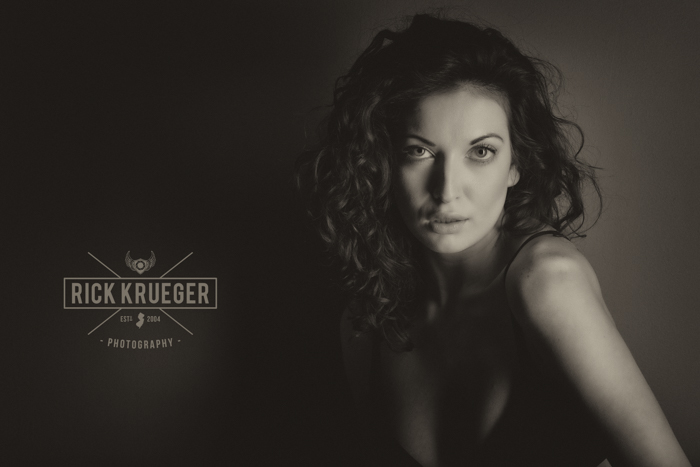

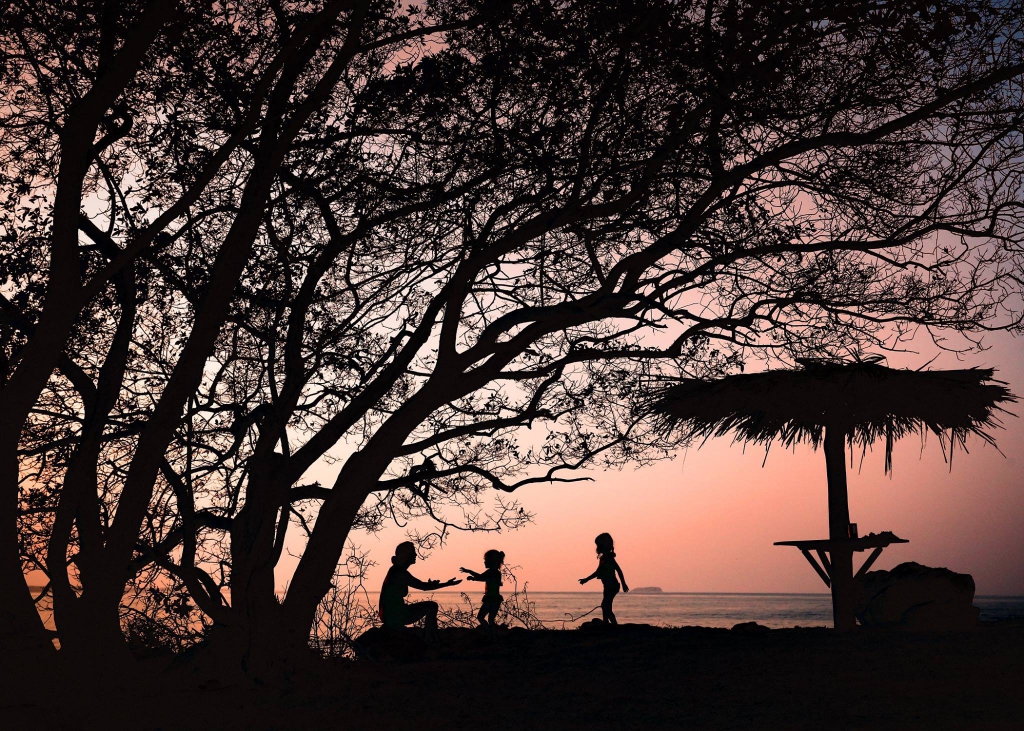



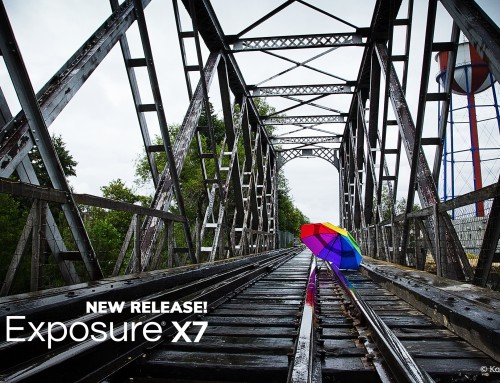

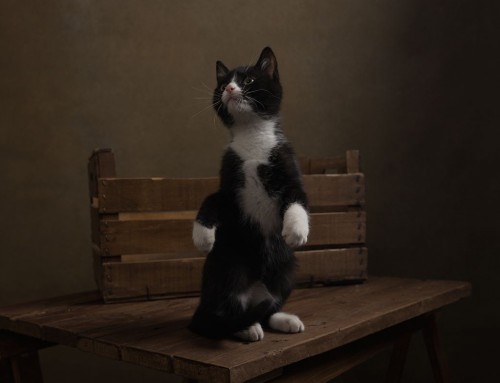
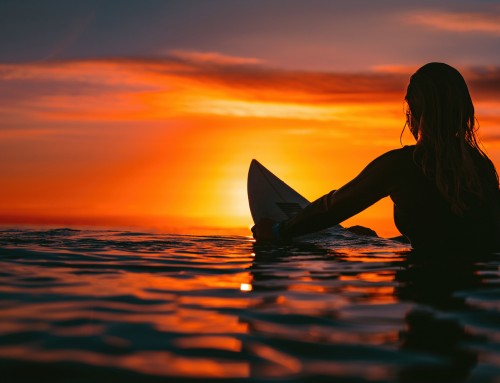
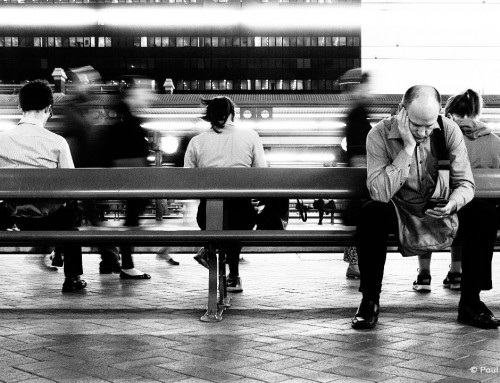

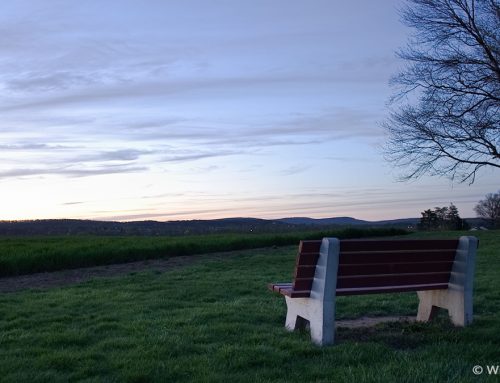
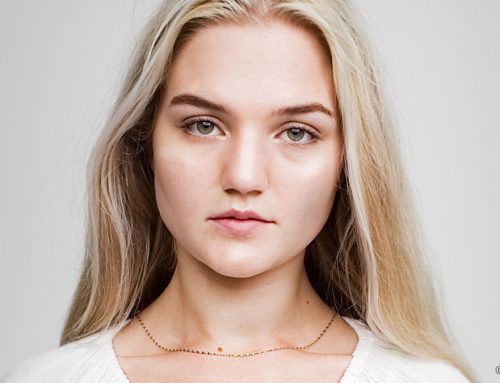
Very cool series of opinions, Jimmy! Great idea to get this going, as mirrorless is definitely here to stay!!
Thanks for taking the time, man!!
Mirrorless is definitely the way many photographers are going now. I tried with the Sony A7R but their no-so-good firmware update method broke the camera. So I’m patiently waiting for Nikon to wise up and get with the times… and what their customers want. It would be nice having a Nikon full frame mirrorless that doesn’t require an adapter to accept lenses.
Interesting topic. As a long time Canon DSLR user I was like many others just looking for a smaller everyday camera that took great pictures. For me that was the Fujifilm X100s, I have it with me whenever I don’t have my 5D3 or 1D3 with me.
I just prefer the feel of a DSLR in my somewhat large hands. I suppose I’d get used to it but for me the cost of switching systems just is too prohibitive.
So I do not foresee a shift in my future.
[…] Read the article here: http://www.alienskin.com/the-mirrorless-debate/ […]
I’m not in any way against DSLRs, but I don’t personally own one. I have a mirror-less system camera that I rarely use (and I’m hoping to sale). 95% of my photographs right now are captured on either a Sigma DP2 Merrill or Nokia Lumia 1020. Neither are system cameras, but they also don’t have a mirror (both are fixed lens). I do have an old Minolta 35mm SLR that I rarely use (no need to use it since I have Exposure…).
I think the camera that one uses doesn’t make a whole lot of difference. It is what one does with it that matters most. As Ansel Adams said, “The single most important component of a camera is the twelve inches behind it.”
Good job with this Jimmy. Mirrorless is here and its just gonna get better and better. Worthy of discussion.
Excellent article. We have moved to using our X-Pro1 more and more at weddings. The quietness of the shutter, and the less intimidatory look of the camera as opposed to our 5DmkIII and, say 70-200, helps us blend more in with the guests, which works for our documentary style. We also get more approval from the registrar or vicar to use this through the ceremony. We moved to Nikon to Canon for DSLR use as their quiet mode was better in our opinion (the D800 was SO loud!), but the Fuji is better still. The focusing can be a bit hit and miss, but we don’t use it fast moving family kids, for example. We plan to check out the XT-1 as this is apparently better. Lens quality is fantastic, and the images, even JPG’s OOC are superb. And my shoulder and back doesn’t hurt so much after a long wedding….
I am basically 100% mirrorless with the DSLR only coming out when I need to shoot fast at 200mm. I suspect it won’t be long until Fujifilm have a fast 200mm to the range. The image quality is stunning and the versatility means you have a camera you can carry everywhere that is still as powerful as a dslr.
I am wedding photographer based in Lancashire, near Lytham, in the Northwest of England.
I have been using Olymous mirrorless cameras (specifically the m43 format) for over 3 years and at weddings for that length of time. I have been exclusively mirrorless for now 2 years.
The main point in a camera, for me, is does it allow me to take a photograph the way I want to? Is it a hinderance or a help?
A lot of people address the sensor issue…..as if that makes the photograph. It doesn’t for me.
From the inbuilt image stabilisation (allowing hand held shots as low as 1/8th of second on a relatively static subject), to the EVF (nailing exposure dead on), to aiding manual focusing using peaking (brilliant on a Voigtlander 25 0.95), to it’s weight (I’m 43 – much happier without back pain)….well these are the things that help a photographer.
It is being continually proven that mirrorless cameras can compete with DSLRs.
I do it everyday.
[…] Source: http://www.alienskin.com […]
For two years, I’ve bought, sold, rented and borrowed various Fuji setups, hoping to find them, at the very least, useable. The image quality (and the horrendous AF) simply wasn’t there… yet. Yes, the X100 was a gorgeous little machine that produced rather impressive results for what it was, but my equivalent focal length setup – a 5D MK II with a Sigma 35mm 1.4, was just much, much better in all regards except size.
Still, I kept at it, hoping for the Fuji’s to catch up, and oh, how they did.
The arrival of the X-T1, the updated X-E2 and the 56mm 1.2 and 23mm 1.4 lenses changed everything and I was finally able to seriously contemplate switching. I gave myself a good 3 month head start before wedding season began, using the Fuji gear on fun assignments and then a couple of engagement shoots where my wife was present and shooting with her usual Canon rig as insurance.
It’s taken some adjusting, but I have zero regret and now feel absolutely confident with my now-100% Fuji rig. I use the 56mm and 23mm for 80% of the day interchangeably on an X-T1 and an X-E2, and then looove to throw on the 14mm 2.8 and the surprisingly great 55-200 (if this is how Fuji does a variable aperture telephoto zoom, I can’t wait to see how their 2.8 version acts. Wow.)
Yes, I still long for a dual-card camera at some point, but my use of cards and the fact that I shoot with my wife at virtually all events assuages any concerns of loss nearly completely.
By the end of a 12 hour wedding day, my shoulders and back feel fine, and, more importantly, I have images that I truly adore. I can shoot wide open on either the 56 or the 23 and never miss focus, all the while achieving beautiful separation and isolation.
The high ISO rendering is just as good, if not better than my 6D or MK II and the final bonus is that I find I can really get close to people without them really seeing a big camera in their presence.
Oh, and lastly, the fact that all this actually ends up costing less than my Canon gear is the icing on the cake.
Thank you Fuji.
Those people above are all producing such marvelous work that my words are so futile. But I’m still not a believer that mirror less is necessarily holding the future. It reminds me of the bridge camera, which is – with a certain abstraction – the ancestor of the MLIC. Well none of the present sales numbers does confirm a massive move over to MLIC and like in the past, bridge cameras couldn’t stop the development and market progress of Digital SLR systems either: it just remained a side-effect. I think Joe Payne expressed my own experiences in the most accurate way… on low light events with just a MLIC camera was more of a hassle then it truly did help me in size or weight. What disturbs me a bit is that these premium brushed metal babies are sitting right into the sweet spot of the premium toys for boys stuff and a fair bit of commercial hyping is going on. People are believing stories that are not fully true. I must say, walking on the streets, I’ve got a lot more attention from the people around me with a camera like the X100 or even X-Pro1 then with any DSLR. They are not cheap and I think you can even hardly survive basing your workflow on a normal depreciation of this kind of equipment. After only a few years all this stuff is completely obsolete and at the end… is that a so much better operational path than working with a solid pro-DSLR with a series of lenses that can easily survive 3 of 4 generations of bodies? I’m not a pro, but even as an advanced enthousiast I run into the fact there is still a lot missing there to like, not the least from most third party manufacturers only going Canon, Nikon and a bit of Sony, so it’s still a yes and no. Of course, it’s not difficult to show work from MLIC cameras that will delight many. But in no way these pictures surpass what any DSLR with good glass will do in the right hands. But being complementary to what we own now, a lightweight solution for particular cases, isn’t that a nice property yet? Does it have to replace a DSLR workflow to have a bit of credibility?
I made the switch from DSLR to mirrorless 2 years ago and I’ve never looked back or missed DSLR in any way whatsoever.
As for cost I sold all my Nikon gear, bought all new Fuji and had change left over.
P
I’ve been shooting the Fuji X System for a year now, and simply love it, the lower weight and fantastic image quality has made me a fan! This image was in 1:1 format, 12 mega pixels. X-E1 and 18-55 lens!
[…] like to think that I have “matured” into a better photographer, but looking at this link on Scoopit, I am nowhere near the folks featured. Practice, practice, […]
Bought an XE1 last year for fun personally. Was hooked and loved the retro workflow and the EVF exposure.
Trying hard not to buy the X Pro 1 on the current offer and wait for the X Pro 2 for next seasons weddings. The XE1 manages to get to some weddings :) Currently shoot 5D M3’s.
I think…. mirrorless will overtake dSLRs. This is similar to the change from medium format to (35mm) style dSLRs a few years back. Who needs a prism and a mirror? well when the technology becomes as good as a regular viewfinder (imagine retina displays in mirrorless and faster processors for AF and refresh rates) why would you want a dSLR.
Mirrorless is evolving fast and Nikon and Canon should not bury their heads in the sand like Kodak etc. Mirrorless will be the future.
Even shooting with the XE1 is faster than the days of weddings on my Hasselblad (and just as enjoyable BTW). Its quite nice to slow down a bit with these cameras and think more (and this means more creative).
Remember when we were all shooting manual and had no problems. We now have focus peaking to assist just like in the days of the rangefinder.
Take a look at most of Magnums archive and how it was shot. We should really have no problems with mirrorless.
I am still weighing up the X Pro 1 as it could become an excellent spare body (at £650 with current cash back!!!) for when I go for a X Pro 2
I am a classical music and theatre performance photographer and three things I need- 1) a silent mechanism (like my beloved M3 I’ve had since 1956), NO delay like my current suite of Canon DSLR bodies and lenses, and LONG bursts because it can take 20 frames (and more) to get that right instant in movement or expression.
Only one model was mentioned as being quiet and no mention was made of bursts, and one mention was made of a delay, which for me is an absolute deal-breaker.
[…] The Mirrorless Debate at alienskin: “I shoot 95% with a Fuji X-T1 and X-E2. I really thought they would be augmenting my Nikon […]
Great selection of opinions. Personally, I’ve just made the switch from Nikon to Fuji, however I understand that mirrorless is not there yet for everybody.
I think that Joe Payne made a brilliant observation that a lot of R&D is going into the mirrorless systems and that it might be a good idea to wait (not long!) until the most important discrepancies between platforms have been fixed. The X-T1 does what I need, but it’s the first that’s good enough, and it still has a few rough edges.
I am sorry that Dustin Abbott got an EOS M, which is hand’s down the slowest and clunkiest mirrorless on the market today, or for the last couple of years.
[…] have become very popular recently, but some photographers are still skeptical. In an article titled,The Mirrorless Debate, a dozen top photographers weighed in on the question. It’s widely agreed that the small size of […]
[…] have become very popular recently, but some photographers are still skeptical. In an article titled,The Mirrorless Debate, a dozen top photographers weighed in on the question. It’s widely agreed that the small size of […]
I guess it all comes down to shooting styles and priorities; in my case, what I value above all else is portability and joy of use (providing the image quality is good enough, obviously, but in this time and age, most of the cameras have comfortably passed that threshold) and I can only get that with the smaller mirrorless bodies, such as the micro4/3 system. I have been shooting with these little cameras and lenses for almost 2 years now and I wouldn’t go back to bigger bodies anymore.
[…] feel these systems are the new rage. Alien Skin recently published an article about switching to mirrorless cameras. Check it out if you’re considering a gear […]
[…] Rick’s name has popped up on the blog, before. He shared his opinions with us for the Mirrorless article back in […]
[…] introduction to Jimmy and the folks at Alien Skin was with regard to the new mirrorless camera trend in the industry. Many of my peers vilify all crop-sensor cameras and any gear that doesn’t […]
This is a the best article I’ve read on this subject. It’s balanced. I tried a Fuji pro for a while, but I don’t think I can work without my DSLR.
Very impressive I would love to feature on this blog.
Head over to our users groups of Facebook. That’s the best place to share your work with us. There is a group for Exposure users and one for Snap Art users.
Great article. I made the switch to mirrorless around a year ago, totally changed the way I work in a good way. Wouldn’t go back to SLR.
I’ve switched to Fuji X two years ago. No regrets :)
[…] was Jimmy’s thought provoking blog post that first opened my eyes to the potential of mirrorless cameras. At the time, I didn’t […]
Here we are 18 months after this article was written and still the debate is on about mirrorless cameras. I haven’t totally made the switch myself but mirrorless cameras do find a place in my camera bag. There are now some very talented photographers who are using mirrorless cameras for all of their work, but for me I still find they have some limitations.
Thanks for chiming in, Simon. Mirrorless cameras have definitely caught the attention of people everywhere. It could be just a matter of time before they overtake the market.